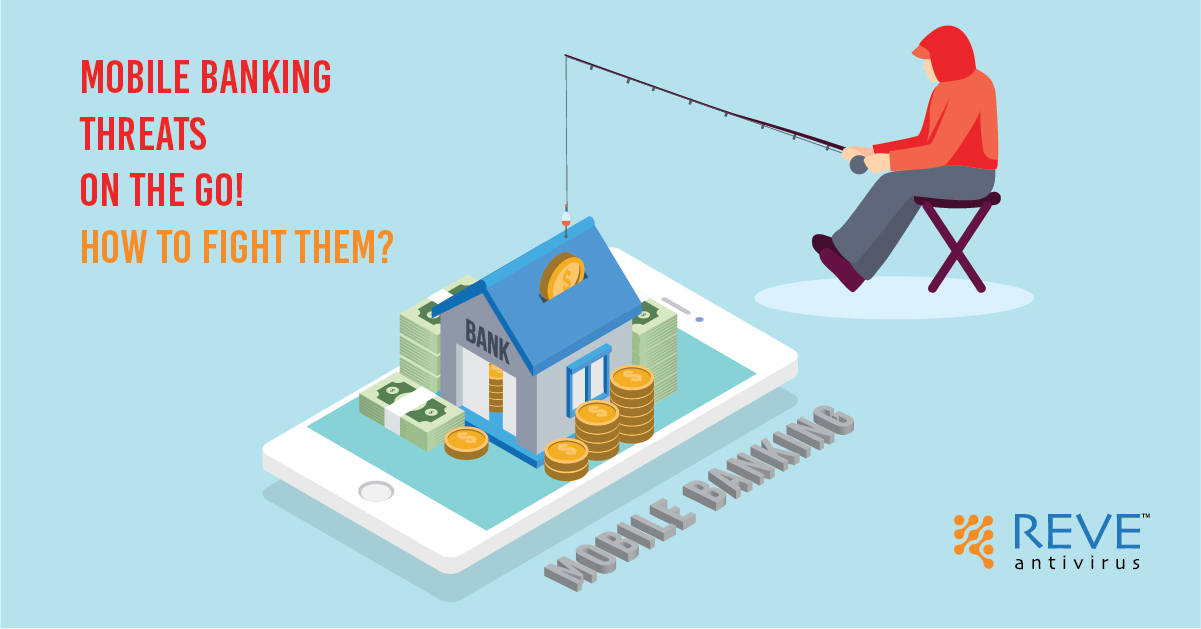 Mobile banking is developing exponentially, which gives rise to more dangers and attacks by cyber criminals. As traditional web-based banking has turned out to be secure, fraudsters have moved to the mobile channel to get to banking data.
Mobile banking is developing exponentially, which gives rise to more dangers and attacks by cyber criminals. As traditional web-based banking has turned out to be secure, fraudsters have moved to the mobile channel to get to banking data.
In addition, customers may accidentally enable culprits to access profitable information by connecting with obscure systems, downloading vindictive applications and tapping on SMS messages that leave gadgets vulnerable.
Questions over versatile security have kept a sizable level of purchasers from embracing mobile banking. Security concerns in mobile banking have additionally caused banks to restrict the full scope of financial activities through the mobile channel. But what are the specific banking security threats affecting the same and how dangerous they can be?
Threats Faced By Mobile Banking Channels
- Poor Quality Banking apps
Mobile banking applications will, in general, be more secure than the normal banking, however number of data breaches and security occurrences can be linked legitimately to poor code quality in banking applications. Mobile app developers don’t generally see the present dangers and most are not capable of securing the private information gathered during online transactions.
- Third-Party apps
Buyers love their advanced mobile phone and tablet applications, yet frequently these applications originate from outsiders with sketchy security practices. Or then again the applications are made by fraudsters and stacked with malware.
- Unsecured Wireless Network
The unbound Wi-Fi is a roadway for fraudsters to access cell phones, in order to gain control over the account information.
- Mobile Virus/Malware Rise
Trojans, infections, and rootkits relocating from internet banking designed explicitly for the mobile marketplace. Scientists see an expansion in mobile malware advancement – in pace with market development.
A large number of customers are now utilizing a wide cluster of cell phones to conduct banking. With this development comes an entirely different level of dangers associated with mobile banking: mobile malware, outsider applications, unbound Wi-Fi systems, unsafe buyer conduct. and it doesn’t make a difference whether an organization utilizes an exclusive or outsider versatile banking application – the bank owns the dangers and risks associated with it.
So how do banking/security administrators moderate their dangers and shield their clients from advancing mobile dangers?
Flaws In banking Apps
Security vulnerabilities in mobile apps are putting the organizations and their clients in danger. Uncovered source code, delicate information, access to back end administrations by means of APIs and more have been revealed after an analyst downloaded different banking applications from the Google Play store and found that it took, by and large, only eight and a half minutes before they were perusing the code.
By far most – 97 percent of the applications tested – were found to lack proper coding, making it conceivable to figure out or decompile the applications presenting source code to investigation and altering. Furthermore, 90 percent of the applications tried experienced unintended information spillage, uncovering information from the monetary application to different applications on the gadget, while 80 percent of the applications tried were found to have feeble encryption, possibly enabling assailants to decode sensitive information.
However, one shortcoming found in 80 percent of the applications which were tested, could conceivably be useful to digital attackers: these applications were found to store information insecurely.
The vulnerable applications are not secure and possibly could enable cyber criminals to get the client’s username and passwords amid the confirmation procedure.
The researchers found a vulnerability for a “phishing” attack in the applications for banks This would enable an attacker to take control over a piece of the client’s screen while they enter their information in the application, so they could discover the certifications and take full control over the victim’s bank account. They additionally worked with those banks to fix the issue, and the applications are presently secure.
One approach to decrease the probability of hacking: Always have the most recent version of a bank’s application with the most updated security highlights. Purchasers ought to never open their bank’s application on open Wi-Fi systems.
Moreover, don’t download new applications, which are likely much more vulnerable. Sign up for alarms on banking accounts, in order to monitor any suspicious movement continuously.
Solutions To Minimize The Threats
Mobile banking is a quick and helpful approach to successfully deal with your cash – for example check your current balance, exchange cash, pay charges on the web, and much much more.
But just around 66% of bank clients with a smartphone at present enjoy the advantages of mobile banking.
Why has the selection rate not yet achieved its most elevated potential? One reason is an absence of trust from the shoppers.
Particularly observed in older generations, they don’t completely confide in innovation. The prospect of having all their financial data directly on a versatile application – and at the palm of their hand – essentially terrifies them.
With the increased number of cyber crimes in this digital world, how would you persuade the rest of the bank customers to take advantage of mobile banking?
Let’s see how
Make it more secure – overpower them with the measure of security that goes with your mobile banking app. Financial companies can add to the security of these banking apps by taking the following steps.
- Adding a Multi-factor verification.
Just requiring the password to grant access to your bank account is the one step to security which can be cracked easily.
By including a Multi-factor authentication feature–for example, generating OTP’s or fingerprints – you include an extra layer of the guard which cannot be easily cracked.
- Utilizing Encryption techniques
Credit cards, card brands and the bank itself play an important role in an online exchange. Billions of online transactions take place every year. So it has become the main point of attack for hackers.
End-To-End encryption is the perfect solution for this gigantic danger as it guarantees that information is free from any danger.
- SMS/Email Alerts
It is protected to expect somebody utilizing mobile banking on their cell phone has direct access to their email as well as SMS.
By sending the real-time notifications to a customer of their account transactions can prevent fraud to a greater extent.
- Monitoring the Account activity
There is versatile software available in the market that will screen and examine the login area and account activity of customers.
This software could hail anomalous conduct for further investigation which could be an email or SMS notification to the client informing the suspicious movement, or a call from the bank for further investigation.
- Setting an Electronic Signature
Setting up an electronic sign can help in several fields like eCommerce, retail branches, and so on.
This technique helps in bringing an immense part of the documentation on your smartphone which empowers financial associations to furnish customers with different advantages. And most of all it maintains a strategic distance from cases of theft and fraud and in turn increases the security.
- Enhancing App Protection
Application security can be improved with grounded shields like RASP (Run time Application Self-Protection) and other protocols. This lessens application’s vulnerability against malevolent attackers and keeps the back end framework unbreakable when clients run the application on gadgets with less OS security standard.
- Adapting Cloud-Based Services
Cloud-Based computing has been around for some time and organizations who embraced it are more inclined to profits. A portion of the advantages cloud administrations may offer to banks are brisk administration conveyance, most extreme accessibility and run time, error correction effectiveness, lower support and cost, high adaptability and incredible adaptability. Banks can even effectively oversee tasks of the patch and discharge through the mobile application improvement process. However, it is imperative to initially quantify the span of your credit association or bank tasks to choose whether or not you need it for your system. To guarantee well being and cautiousness, few banks want to settle the on-premise server.
Steps We Can Take To Prevent Mobile Banking Threats
- By Not Clicking on the Malicious links
We should never click on the mails inviting to the bank’s website. Always navigate to the bank’s website directly because a secure website will always start with https and not without it.’s’ stands for secure socket layer enabling the secure connection.
- Being aware of the fraudulent calls asking for credentials
Never disclose your financial or banking details such as CVV number, ATM pin of your credit cards or debit cards on phone to a caller claiming to be a bank associate.
- Keeping your information safe
One should never store your account data, for example, the credit card number, CVV number, and MasterCard PINs, on your portable handset. And if are utilizing a banking application, never store your username and password on your portable handset. This may permit quicker access, however, is a potential risk if it falls in wrong hands. Above all, never utilize mobile payment app when you are on a public system example-free Wi-Fi hotspots. Set a screen lock always, be it pattern or number.
Conclusion
There is no uncertainty that portable applications and online stages have made financial procedures convenient for individuals. But there is additionally a bigger risk of hackers trading off the information thus bringing immense confusion. The key is to actualize these online safety efforts with the most extreme consideration.
The ways referenced in this article can help you at a greater level to battle inadequacies of ordinary techniques and make the banking applications more secure.
In this way, your subsequent stage must include reaching a portable application advancement firm and inquiring about the expense of application improvement with the end goal that it incorporates all the above highlights.
- RaaS : The Dark Side of SaaS
- Hackers Target MOVEit Transfer’s Zero-Day Vulnerability, Emergency Patch Deployed
- How Scammers Are Utilizing ChatGPT? Few Tips To Be Safe
- World Backup Day: Why Data Backups are Important in Cybersecurity
- What is Social Engineering and How Cyber Criminals Use It
- Things To Know About Personally Identifiable Information (PII)
- What is Data Breach? Why and How It occurs? How To Prevent Data Breach


